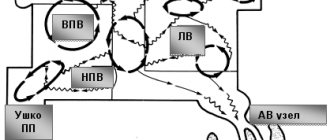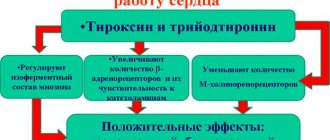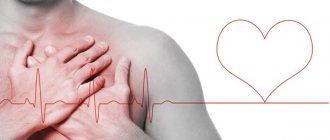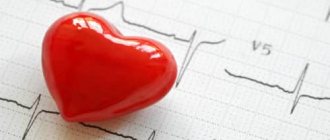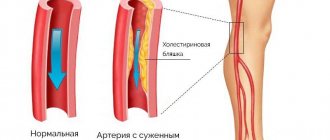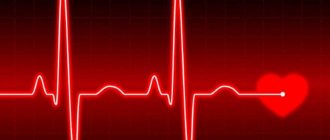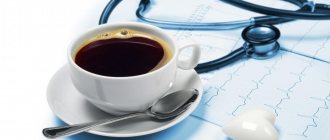How the heart works
The myocardial muscle is a pump that forces blood to move throughout the body. It consists of two halves, each with an atrium and a ventricle. Schematically, the work of the heart looks like this:
1. Venous blood rich in carbon dioxide enters the right atrium.
2. Plasma goes into the ventricle, from there to the lungs, where it gets rid of carbon dioxide and takes up oxygen.
3. Blood goes to the left atrium, from there it passes into the left ventricle.
4. The plasma is then released into the aorta, after which it begins to move through the arteries.
Blood flows from chamber to chamber when the heart muscle contracts (systole). When it is in a relaxed state (distole), the chambers fill with blood. The heartbeat occurs under the influence of electrical impulses, mechanical (expansion of the chambers) and sound factors.
The ventricles are mainly responsible for the heartbeat (92%). But when the myocardium beats too hard, the duration of distole decreases, and the atrium begins to contract intensely.
Causes of rapid heartbeat
Elementary stress or anxiety increases the heart rate, and this is quite natural, but if the situation is repeated day after day, this is a pathology. That is, tachycardia develops - an attack of palpitations that can last from several minutes to several hours.
In addition, additional factors that cause rapid heartbeat may include:
- endocrine system disorders and thyroid hormone levels;
- acute infectious diseases accompanied by an increase in temperature, which almost always leads to increased heart rate;
- abuse of stimulants, energy drinks, narcotic drugs and strong alcoholic drinks;
- pregnancy in women;
- overwork, chronic lack of sleep, serious illnesses;
- vegetative-vascular dystonia;
- sudden physical activity without appropriate preparation;
- increase or decrease in blood pressure;
- heart disease - ischemia, myocarditis, defects, arrhythmia;
- vascular diseases - atherosclerosis;
- overweight;
- lack of vitamins and microelements;
- blood loss or anemia;
- oncological diseases.
An additional factor causing rapid heartbeat may be vegetative-vascular dystonia.
Is it possible to reduce high heart rate?
Reducing your high heart rate is not only possible, but also necessary. The need to normalize cardiac activity is due to the fact that increased heartbeat indicates the existence of a health hazard. With frequent contractions, the heart loses its ability to supply all parts of the body with blood, which impairs the supply of oxygen to organs and tissues.
The result of disruptions in the functioning of the heart can be both minor discomfort and more serious disorders. A rapid heartbeat can cause chest tremors, dizziness, headaches, and feelings of fear and anxiety.
A high heart rate can cause irreversible consequences, such as:
- the formation of blood clots in the heart area, which increases the risk of stroke;
- development of cardiac ventricular failure;
- the occurrence of arrhythmic shock; fainting;
- death due to sudden cardiac arrest.
"Long-term methods"
- One of the possible reasons for increased heart rate is increased calcium levels. To reduce calcium levels, you need to include foods rich in manganese and magnesium in your daily diet. These are soy products, leafy vegetables, nuts.
- Your heart rate is affected by products containing caffeine and should be avoided. This list includes coffee itself, chocolate, diet pills, and caffeinated soft drinks. You should limit yourself to drinking tea, as tea contains caffeine and other tonics that can increase the heart rate.
- Vitamin D reduces heart rate: consuming 1 gram of fish oil daily for two weeks can reduce your resting heart rate by 6 beats per minute.
- It is necessary to stop smoking and drinking alcohol. The common myth about reducing nervous tension by smoking or drinking alcohol has already been debunked many times. To eliminate the effect of stress, which can raise the pulse to critical values, quitting smoking should be gradual under the supervision of a doctor.
- The influence of sharp and loud sounds can increase heart rate by 13 beats/min. Therefore, you should avoid places with high noise levels.
Regular exercise
In order for the heart rate to remain normal during various physical activities, as paradoxical as it may sound, the volume of physical exercise should be increased. Regular exercise trains not only the muscles of the body, but also the cardiovascular system. Over time, training or performing even simple gymnastic exercises will lead to a decrease in heart rate and the ability to quickly recover heart rate after exercise.
When performing physical exercises, the main thing is not the level of load, but the frequency of repetitions and the rhythm of performing tasks. In some cases, daily exercise may be contraindicated; in this condition, it is possible to adjust the physical activity plan to avoid overwork and increase the load on the heart.
As general exercises we can recommend:
- Nordic walking with poles.
- Jogging.
- I ride a bike.
How to run correctly
Aerobic exercise during this type of physical activity can lower your resting heart rate by 5 to 25 beats per minute. Statistics show that a course of the above physical activities, alternating with each other, leads to a decrease in heart rate at rest in 11% of patients.
Walking alone does not affect the reduction of heart rate at rest - to the same extent as intense physical activity - although it can reduce the time it takes for the rhythm to return to normal levels after physical activity.
Often an increase in heart rate is associated with climbing stairs. This is especially true when carrying heavy loads. There is a useful exercise called the “step,” which involves rising onto a low bench, alternately using one leg or the other. This exercise can be done at home without any help. In the first stages, you will need to control your pulse and not allow it to go beyond 110–115 beats per minute. As you train, the number of approaches will gradually increase, which will allow you to climb real stairs without shortness of breath and increased heart rate.
Tachycardia in pregnant women
During pregnancy, significant changes occur in a woman’s body and it begins to work in a different mode. Rapid heartbeat (up to 100 beats per minute or higher) is normal during this period. Often, tachycardia during pregnancy is mild and does not pose a danger. But it happens that it is accompanied by unpleasant symptoms:
- headaches;
- dizziness;
- chest pain;
- sometimes fainting.
Doctors recommend that the expectant mother:
- rest more;
- avoid stress;
- drink more clean water.
Prevention of tachycardia
Tachycardia is a serious disease that can lead to negative consequences. To protect yourself from painful heart palpitations, it is important to follow a number of preventive measures. These include:
- Walks in the open air. They have a positive effect on overall health.
- Maintaining proper nutrition. It is recommended to abstain or minimize the consumption of foods that cause an increase in blood pressure (strong tea, coffee). It is also advisable to consume less salt as it causes an increase in systolic blood pressure.
- Avoid stressful situations. They stimulate the production of adrenaline and other hormones, which cause a sharp increase in heart rate.
- Refusal to use tobacco and alcohol products. They cause vasoconstriction and increased blood pressure.
Regular increase in heart rate and pulse can cause negative consequences, so this phenomenon cannot be ignored. You can lower your heart rate at home, but to find out the reason for its increase, you cannot do without the help of a specialist. As a rule, the problem is eliminated after prescribed drug treatment.
Treatment
Systemic. Aimed at eliminating the root cause and symptoms.
Among the techniques:
Surgical measures. For congenital and acquired defects, persistent rhythm disturbances (installation of a pacemaker), severe anatomical defects after a heart attack, tumors.
Medicines.
Several groups of drugs are used:
- Alpha and beta blockers. Eliminates the sensitivity of receptors to special substances. Carvedilol, Anaprilin and others.
- Calcium channel blockers. Prevents the penetration of element ions into blood vessels. Diltiazem, Verapamil.
- Tranquilizers, sedatives. Calms the nervous system. Synthetic (Diazepam) and herbal (motherwort and valerian).
- Potassium and magnesium products (Magne B6, Magnelis). To restore myocardial conductivity and eliminate deficiency causes.
Dosages and names are determined by a cardiologist; it is impossible to choose them yourself.
